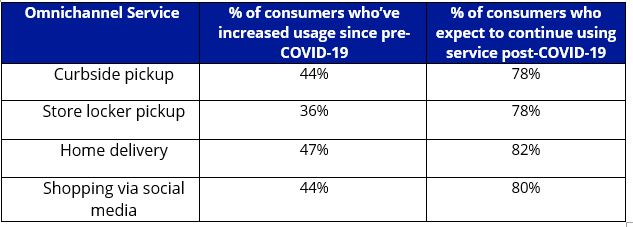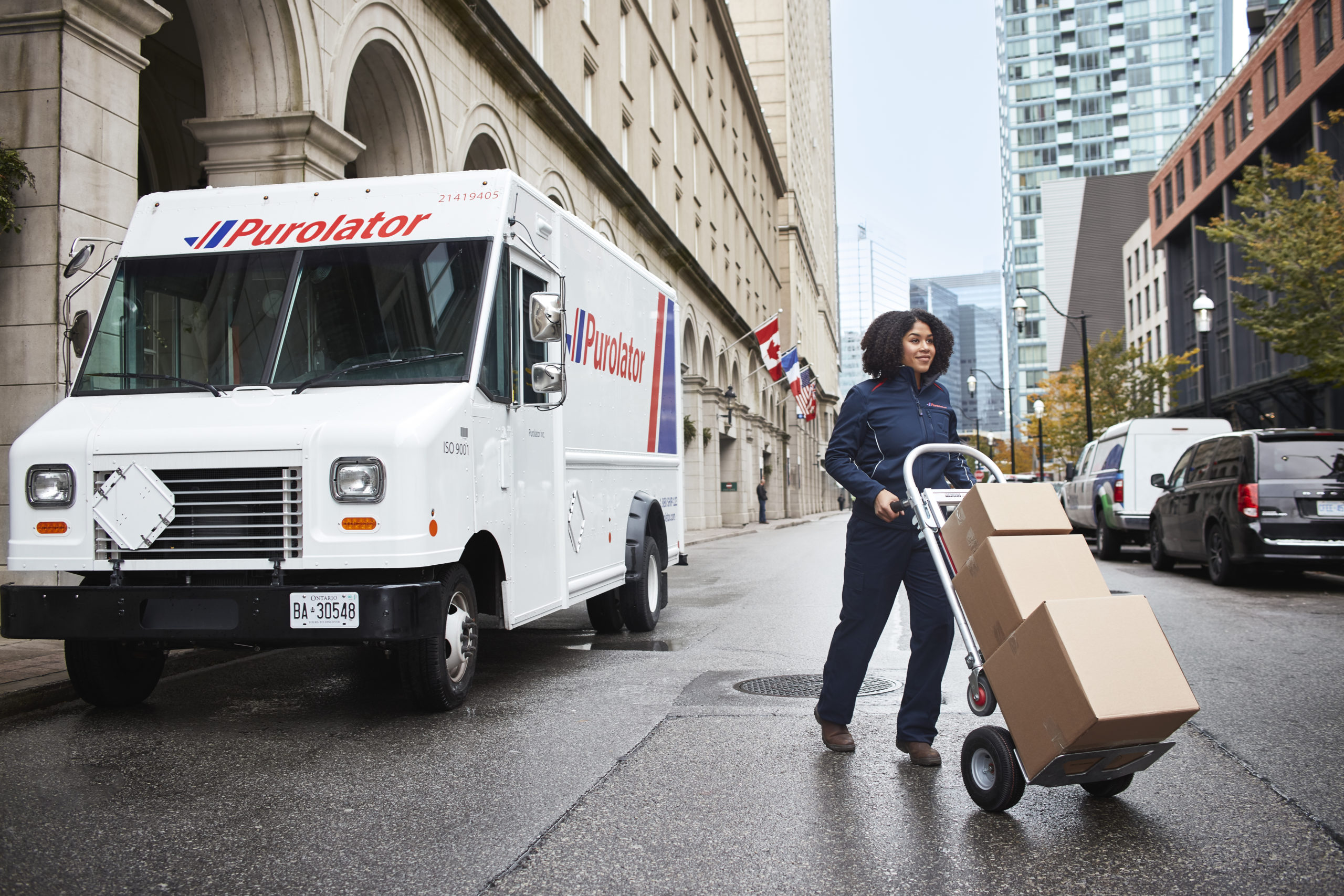You probably know first-hand that COVID-19 has been impacting online shopping trends. It was over a year ago that government mandates told many people around the world to stay home. These restrictions meant more people were shopping online, and some people who’d never shopped online did so for the first time. Items such as groceries, beauty products and cleaning products that were once picked up in person found their way into many virtual shopping carts. Pharmaceuticals and other medical devices were also new contenders for online orders.
A year on and vaccinations are underway around the world. Now, governments and retailers are thinking about the future and getting “back to normal”. But, with the convenience, availability and demand of online shopping, has COVID-19 reshaped e-commerce for good? Let’s take a look at 10 online shopping trends from the past year that could influence the future.
Table of contents
-
- E-commerce growth persists as consumers continue to depend on it
- The demand for online shopping means traditional businesses created an online presence
- In a “post-COVID-19” world, consumers plan on using e-commerce more frequently than pre-COVID-19
- Telemedicine visits have risen by 60%, and with it, online orders of medical supplies have skyrocketed
- In-store purchased products, such as CPG products (including groceries) are being purchased online
- More omnichannel services are being used
- Try before you buy is becoming more prevalent
- Subscription services have boomed
- Sustainable and local shopping is a big focus
- Shipping incentives remain a huge selling feature
E-commerce growth persists as consumers continue to depend on it
In May 2020, e-commerce sales accounted for 10% of all retail purchases in Canada – more than double from the previous year (4% in 2019).
It comes as no surprise that more people are relying on e-commerce purchases – in fact, Purolator saw a 75% increase in home deliveries in 2020 with a 34% increase in retail shipments.
The demand for online shopping means traditional businesses created an online presence
The e-commerce share of the retail market increased as much in the first half of 2020 as it did in the past five years.
This e-commerce growth was in part due to traditional businesses creating a way for people to purchase their products without coming to their stores. Brick-and-mortar businesses are now creating a name for themselves online to ensure they’re not missing out on potential sales – whether it’s building a full e-commerce store, or simply creating a social media page to showcase their products.
In a “post-COVID-19” world, consumers plan on using e-commerce more frequently than pre-COVID-19
With a larger number of retailers offering e-commerce and people getting used to shopping online, trends suggest more people will continue to use e-commerce more than pre-COVID-19 when we “return to normal”. In fact, even consumers who rarely used e-commerce prior to COVID-19 say they’ll continue to shop online even where retail has reopened.
Telemedicine visits have risen by 60%, and with it, online orders of medical supplies have skyrocketed
It wasn’t just e-commerce growth that occurred due to COVID-19. While it was safer to stay home during 2020, virtual health care skyrocketed from 4% to 60% where doctor visits could be conducted beyond the constraints of a surgery. Telemedicine appointments are efficient, safe and even allow for prescriptions to be delivered directly to the patient. While there are rules around medical deliveries (especially for prescriptions), they’re a convenient option that continues to rise in popularity. Purolator saw a
In-store purchased products, such as CPG products (including groceries) are being purchased online
Prior to COVID-19, CPG items (such as groceries, cleaning products and personal hygiene products) were generally purchased in-store rather than online. There was convenience in going into a supermarket – for many, it was part of a routine where multiple items were picked up from one store.
More omnichannel services are being used
Omnichannel services were a growing trend prior to COVID-19, but when brick-and-mortar shopping had to close for in-person shopping, new channels were needed to complete a purchase. Consumers have increased usage of digitally-enabled services during the COVID-19 pandemic.A recent survey suggests that these new levels of omnichannel usage will continue beyond COVID-19 times. Here are some of the highlights:

Data from Accenture Survey – How is COVID-19 changing the retail consumer?
Try before you buy is becoming more prevalent
Fewer people are shopping in-store, and even when they are, not everyone is comfortable with using the changing room facilities that are open. Some online retailers are bridging the consumer experience gap between purchasing online and waiting for the item by sending the item for free, and letting the customer decide if they want to keep and purchase it. To further sweeten the deal, free returns are generally part of the deal, complete with pre-paid shipping labels.
Subscription services have boomed
Subscription boxes have grown in popularity over the last decade. These subscriptions are predominantly set up by direct-to-consumer (DTC) companies that sell subscriptions of food, make-up, pet food and hygiene products.
These subscription boxes are convenient and flexible alternatives to purchasing the same (or similar) items on a regular basis. With this in mind, it comes as little surprise that during COVID-19 times, these subscription boxes accelerated in growth. Due to COVID-19, data now projects that by 2023, as many as 75% of direct-to-consumer brands will have a subscription-based offering.
Sustainable and local shopping is a big focus
During the pandemic, many small, local businesses had to start selling products online that were beyond their original offerings to stay afloat (e.g. gift stores selling PPE online, restaurants selling groceries alongside their takeout menu). Due to this, consumers have taken the time to consider their purchases and how they affect their local community and the environment as a whole. According to a recent survey, 61% of shoppers have started making more environmentally friendly, sustainable or ethical purchases since the start of the pandemic, and 89% expect they will continue to do so beyond COVID-19.
With an increase in home deliveries, delivery providers are taking steps to provide eco-friendly delivery options, such as e-bikes and e-vehicles. These eco-friendly delivery vehicles help to reduce truck traffic, noise pollution and greenhouse gases.
Shipping incentives remain a huge selling feature
If customers have to spend more in order to be eligible for ‘free shipping’, many do spend more to qualify. Of course, shipping is never “free”. Businesses can absorb the costs effectively by asking customers to sign up to a loyalty program, spend a certain amount of money or provide special deals where shipping is free – all of these incentives encourage further spending, making free shipping a cost-effective option. And shoppers are happy to sign up for a loyalty program or purchase more to enjoy free shipping. Statistics show that 62% spent a specific amount of money to qualify for free shipping and 38% signed up to a loyalty program for free shipping perks.
Online shopping trends may be here to stay
COVID-19 has forced consumers of all demographics to change their routines and shopping habits – including consumers shopping online for the first time. Retailers responded fast to find more convenient ways to shop, including setting up e-commerce options and offering omnichannel solutions such as curbside pickup. While pre-COVID-19 habits will return in some respects, it seems highly likely that most of these trends are here to stay in a post-COVID-19 world. In order to compete, retailers must continue to lean into consumer preferences. This includes working with the right partners that can help them scale or change the way they sell.If you’re experiencing an increase in e-commerce deliveries or looking to take your business online for the first time, the right delivery partner can provide solutions that can cater to the needs of an online customer base. Look for flexible and customer-centric delivery services such as a variety of shipping options, delivery times and customizable delivery preferences such as SMS tracking notifications and remote signature release options.
